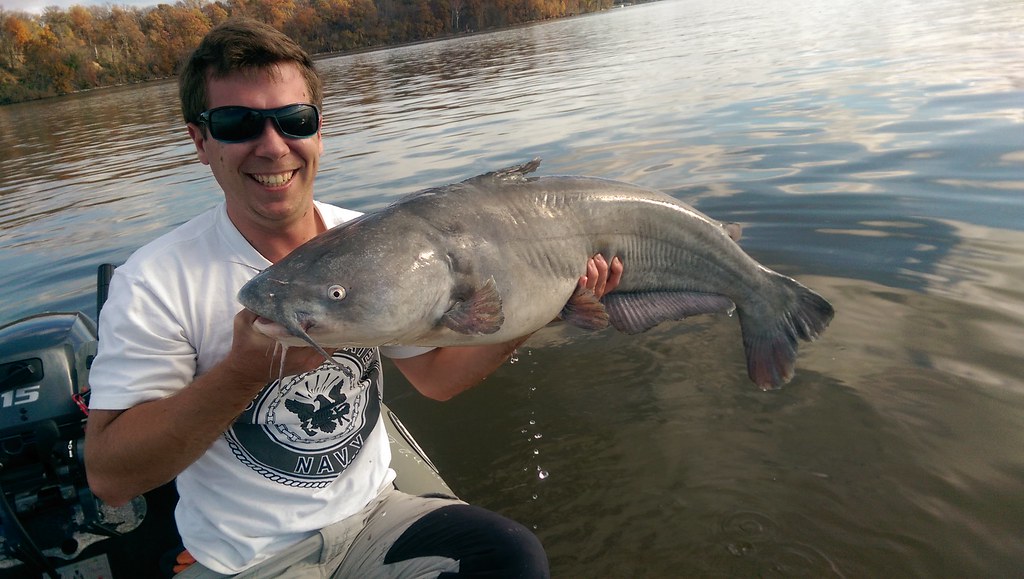State Announces Blue Catfish Purchasing Initiative
Program to Provide Quality Nutrition, Reduce Impact on Chesapeake Bay
 The Maryland Department of General Services (DGS)—in partnership with the departments of Agriculture and Natural Resources—has awarded contracts to Jessup-based Reliant Fish Co. and Congressional Seafood Co. for a program that will create sales of Maryland-harvested blue catfish to state institutions providing food services. The program also helps the state reduce the blue catfish’s negative impact on the Potomac River and Chesapeake Bay ecosystems by creating a reliable market for the non-native species.
The Maryland Department of General Services (DGS)—in partnership with the departments of Agriculture and Natural Resources—has awarded contracts to Jessup-based Reliant Fish Co. and Congressional Seafood Co. for a program that will create sales of Maryland-harvested blue catfish to state institutions providing food services. The program also helps the state reduce the blue catfish’s negative impact on the Potomac River and Chesapeake Bay ecosystems by creating a reliable market for the non-native species.
“This successful collaboration between our state agencies has provided state institutions with an additional protein option for their facilities,” said DGS Secretary Ellington E. Churchill, Jr. “The Department of General Services continues to be a conduit of achieving goods and services for the best interest of the state of Maryland.”
State institutions including correctional facilities, higher education institutions, hospitals, public schools, etc. will be able to purchase cases of blue catfish directly from Maryland Correctional Enterprises (MCE)—a program within the Department of Public Safety and Correctional Services (DCPCS) that aims to provide structured employment and training to offenders in order to improve future employability and reduce recidivism.
“This is such a big win all around for our department,” said DPSCS Secretary Stephen Moyer. “Not only do we provide work for our inmates through our industry arm at MCE to distribute the fish but those in our custody get tasty food with the nutrition they need.”
In addition, the new statewide contract can be used by Maryland counties, municipal corporations, and public agencies to meet their food service needs. One case of blue catfish contains 40 pieces of four-ounce portions. This allows food service managers to provide their clients with a tasty, local protein option.
“This statewide purchasing program will allow us to curb population growth of this destructive species while building new, sustainable markets for our watermen,” said Agriculture Secretary Joe Bartenfelder. “The blue catfish is also an excellent source of protein, and we view this program as a win-win for the state.”
Maryland watermen have the means and ability to harvest blue catfish, but have been lacking a strong market for their catch. The Department of Agriculture’s seafood marketing program continues to make a concentrated effort to raise public awareness and promote the consumption of this flaky white fish. In addition to these efforts, the statewide purchasing program creates a steady, reliable market for blue catfish.

Blue Catfish courtesy of Bryan Rosensteel
“Invasive species like blue catfish threaten sensitive ecosystems and habitats by outcompeting established and native species,” Maryland Natural Resources Secretary Mark Belton said. “Any effort to mitigate or reduce their threat to our environment is a win, and that’s why we encourage anglers and watermen to capture and keep them. This program aims to do just that by establishing a regular and sustainable market for our uninvited and unwelcome guests.”
Blue catfish are native to the Mississippi, Missouri and Ohio river basins. The fish was introduced to Virginia waterways for sport purposes in the 1960s and has since spread throughout Chesapeake Bay and its tributaries. Adult blue catfish feed on many native species including mussels, freshwater clams, perch, rockfish, and blue crabs—they have also proven to outcompete native species for available resources. This has had a significant impact on the ecosystem of our local waterways.
For more information on the state’s purchasing programs, please visit the following sites:
- https://dgs.maryland.gov/Documents/comm/food/001B9400130-.PDF
- https://dgs.maryland.gov/Documents/comm/food/001B9400131-.PDF

 1-888-373-7888
1-888-373-7888 233733
233733